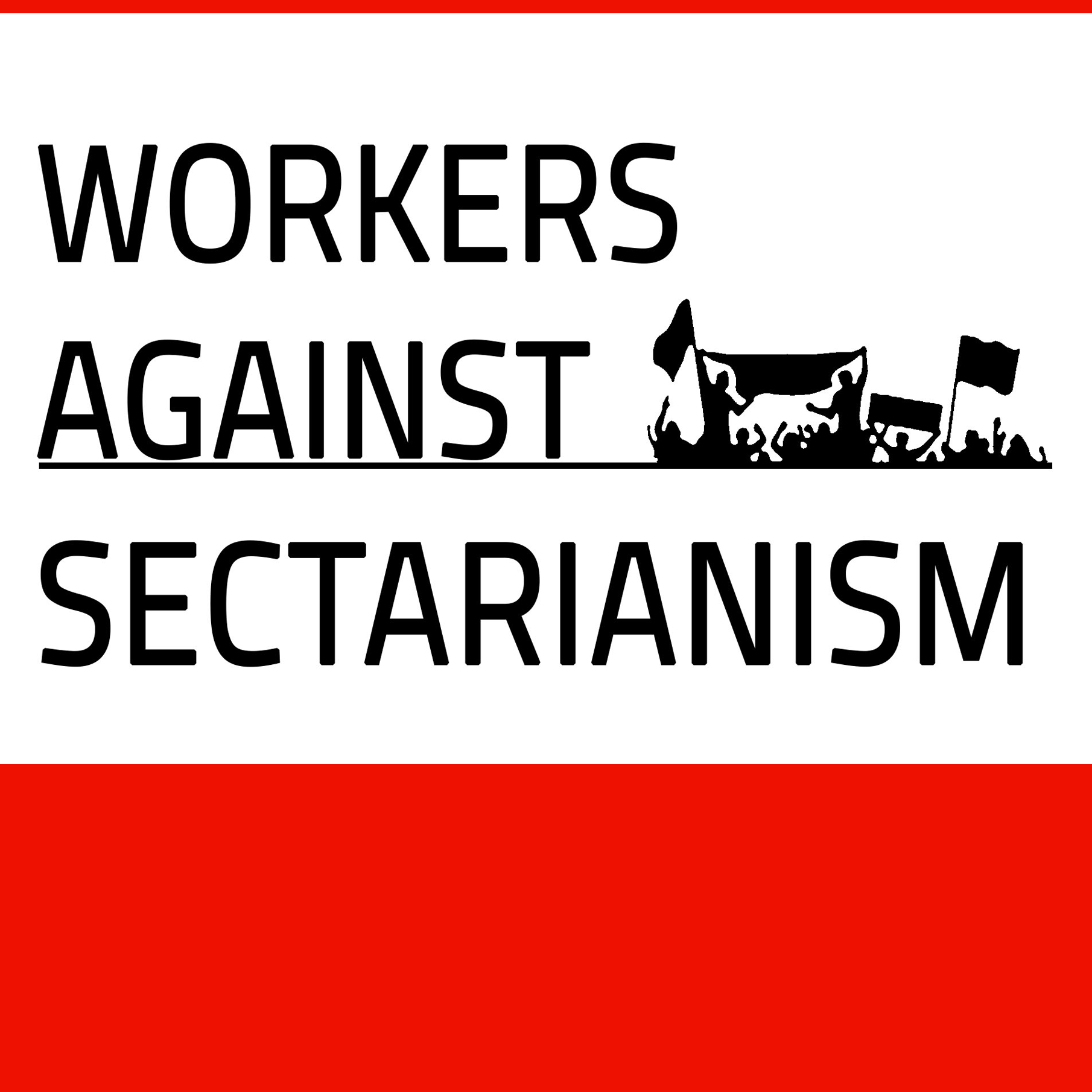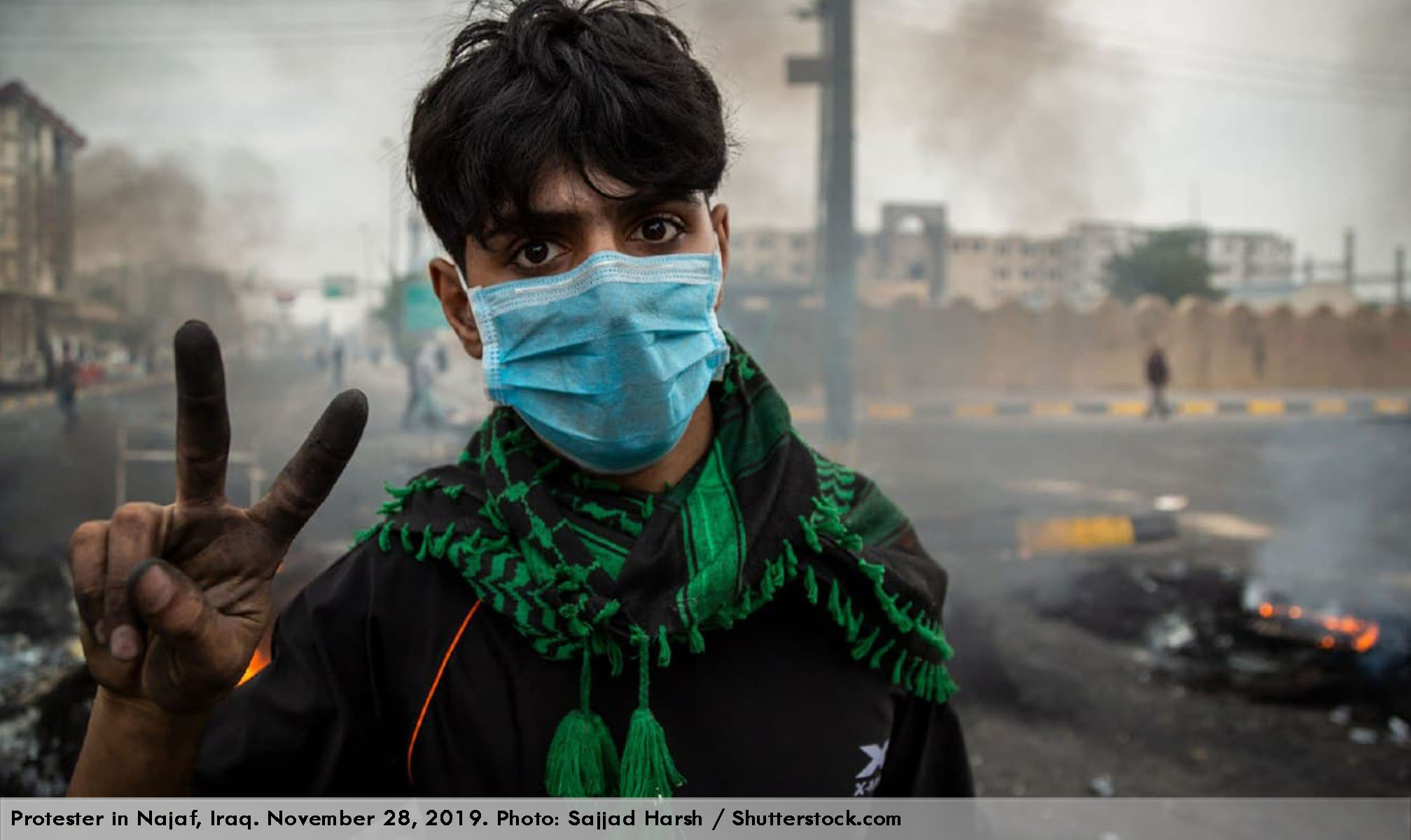On the anniversary of the 2019 October Revolution, Iraqi protesters show a renewed determination to create their own history and shape their own future.
Schluwa Sama
This past Sunday, one year after Iraq’s October Revolution started gaining momentum, thousands of demonstrators gathered in Baghdad’s Tahrir Square once again. Last year’s uprising was commemorated with mixed emotions of pride and grief, and with many thousands of protesters joining different marches that all culminated in Tahrir it also gave the impression of a re-enactment that carried within it the revolutionary potential to breathe new life into the uprising. People traveled all the way from southern Iraq following calls from activists in Habubi square in the city of Nasiriya, another stronghold of last year’s uprising, to march to Baghdad and join the protests there.
The widespread social unrest set in motion a political process that quickly forced former Prime Minister Adil Abdul-Mahdi to resign, with a promise of new elections to be held in 2021. Different candidates were suggested to replace him, but none of them could secure enough support due to continued pressure from the streets.
But in May, the self-declared “reform-minded” Mustafa Al-Kazemi was confirmed as prime minister with the promise that his government would be a “solution-based, not a crisis government” — until the elections next year, that is. There are rumors that Al-Kazemi invited around 300 hundred influential activists to discuss the establishment of a new political party. Opinions among protesters on Tahrir about this are divided, with some seeing them as traitors while others agree that this is the only option if they want to change the political system.
All this occurred against a backdrop of increased animosity between the US and Iran, who were effectively fighting a proxy war on Iraqi soil, and the spread of the coronavirus which severely weakened the protest movement and its ability to mobilize large numbers of people in the streets. On top of that, the protesters have not only had to deal with the wrath of the Iraqi state, but also with the extremely violent counterrevolutionary militias, who operate as Iranian state proxies and have been responsible for many extrajudicial killings.
Despite the fact that last year’s uprising has brought little economic and political improvements, the October Revolution has nonetheless become a historic day on the Iraqi calendar. It is viewed and experienced as a liberation from the sectarian ideologies that have dominated the post-2003 Iraqi political system.
“LET THEM GO. WE DO THIS OURSELVES.”
Last year’s uprising followed years of protest and civil society activism; however, it was novel in its scope and capacity to pressure the governing elites and impact wider society. This included a radical break with traditional social norms, from gender norms to sectarian ideals. Instead, the movement embodied a new unifying Iraqi identity, represented by ancient Assyrian and Sumerian symbols. These came to play an important role in the visual and artistic representations of the uprising, as did images of women and tuk-tuk drivers who, as part of an impoverished lower class, became symbols of the revolution.
Another important development was the emergence of the idea of a civil state that provides basic services to its citizens and is free from any interference by religious authorities. The awareness about this idea had been raised and refined through countless discussions among protesters and ordinary Iraqis on the occupied squares throughout Iraq. On the ground, the uprising was characterized by a high degree of self-organization, endurance and the participation of many youths who were passionate in their struggle to bring down the sectarian and corrupt political system established after the US invasion of 2003 that made it impossible for them to life a dignified life.
During the protests, a protester summed up the situation as follows: “Within just a few days, we cleaned-up Tahrir square, we refurbished the Turkish restaurant, installed electricity and internet here, painted the streets, kept it secure and provided people with food. This governing elite has been in power for 16 years and they have provided us with nothing. I say let them go. We do this ourselves.”
The protesters are denouncing decades of mismanagement, run-down basic services and corruption, or rather, as the protesters call it, the looting of Iraq’s resources. All the while, there are few job opportunities for the impoverished youths while political elites amass wealth through their control over the country’s oil resources. Iraq’s oil contributes 60 percent of the country’s GDP and makes up for 99 percent of exports, making it heavily dependent on global oil markets. While Iraqi lives are thus closely tied to the whims of the global oil economy, the oil revenue continues to be distributed through an apparatus of sectarian and party networks.
Read more from the source: ROAR mag

 Nominating a new parliament speaker without any immediate solutions since last year, 2023.
Nominating a new parliament speaker without any immediate solutions since last year, 2023. On the memory of the genocide that the marshes were subjected to, who are the Ahwarians?
On the memory of the genocide that the marshes were subjected to, who are the Ahwarians? Muqtada al-Sadr’s militia attack the Green Zone in Baghdad
Muqtada al-Sadr’s militia attack the Green Zone in Baghdad The environmental activist Jassim al-Asadi, who seeks to protect the marshes in Iraq, has been kidnapped on 1/2/2023.wed
The environmental activist Jassim al-Asadi, who seeks to protect the marshes in Iraq, has been kidnapped on 1/2/2023.wed Working women in Iraq – the way to work is not safe
Working women in Iraq – the way to work is not safe Urgent: Total chaos inside Iraq, imposing a curfew, general closure of all government institutions, in addition to leaving most of the embassies of foreign countries in Baghdad.
Urgent: Total chaos inside Iraq, imposing a curfew, general closure of all government institutions, in addition to leaving most of the embassies of foreign countries in Baghdad.















Way cool! Some extremely valid points! I appreciate you writing this write-up and the rest of the site is also very good. Gretta Araldo Riana